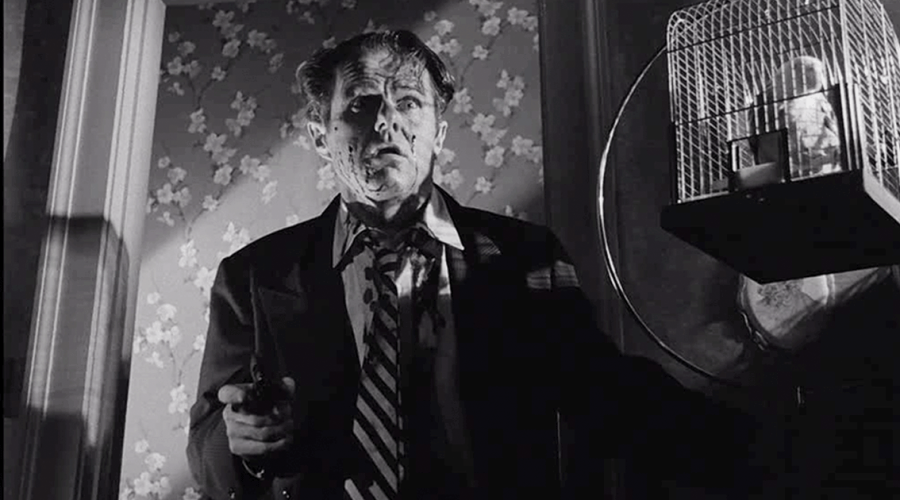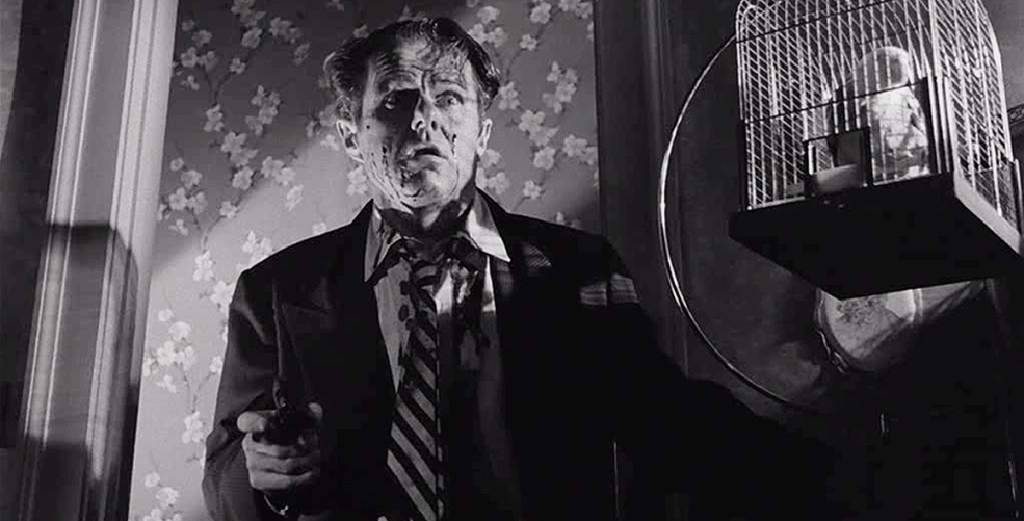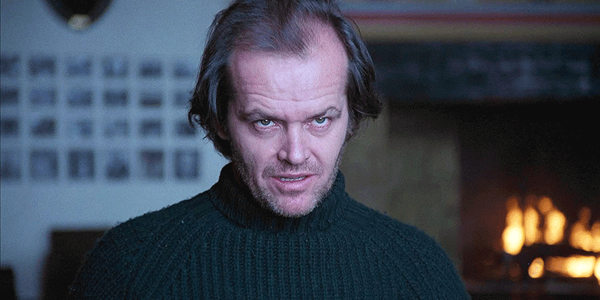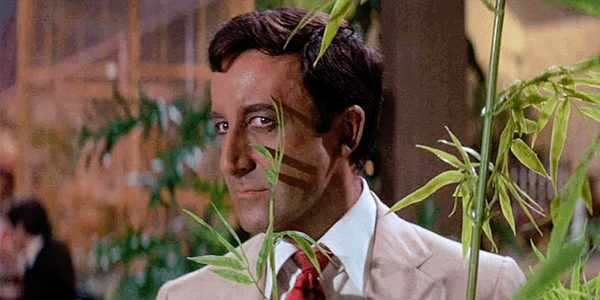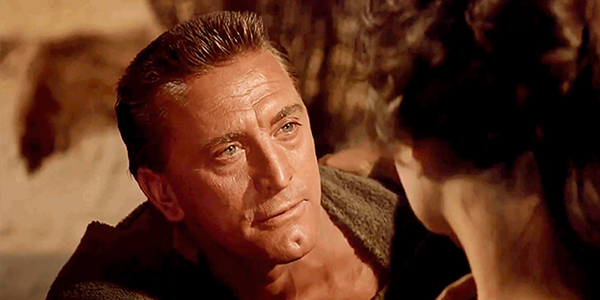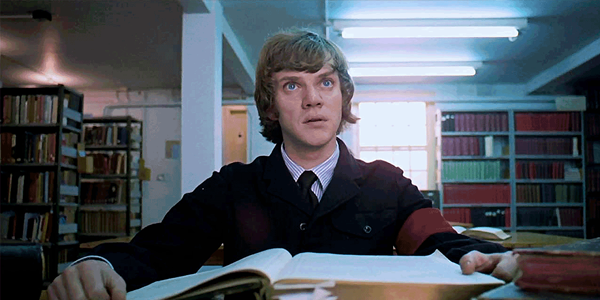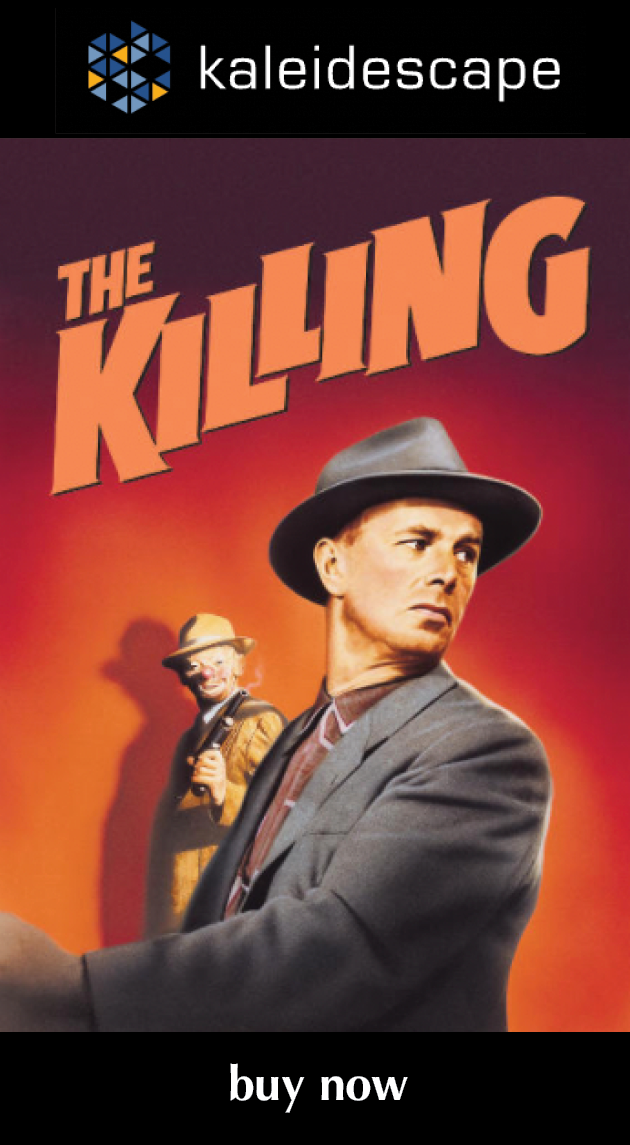Review: The Killing
related reviews
Sign up for our monthly newsletter
to stay up to date on Cineluxe
Kubrick’s first real feature is rough around the edges but is still one of the seminal works of American filmmaking
by Michael Gaughn
August 2, 2021
The staging is often stilted, the acting often laughably bad when it’s not just mismanaged, it’s a concatenation of crime-drama clichés that leans almost to the breaking point on John Huston’s The Asphalt Jungle, the whole punctuated by pretentious, even silly, compositions and tracking shots that convey nothing, and yet Stanley Kubrick’s The Killing is one of the seminal works of American filmmaking, poised right on the pivot into what would become, for better or worse, the modern era of the movies. This is Kubrick’s first real feature, and he freely admitted that, in that age before film schools, he still had his training wheels on—and it shows. But, determined not to be a studio hack, aiming to be the first true independent within the studio system, he pushed the boundaries throughout. The results might be ludicrously mixed, but they’re a damn sight more interesting than what almost any other director was doing at that time, and their ramifications were, in retrospect, huge.
Critics did dismiss The Killing as a low-budget Asphalt Jungle knockoff—an accusation that was true as far as it went. And Kubrick might have seen himself as more of a Hustonian director at that point (although his affinity lay more with The Treasure of the Sierra Madre), but as he hit his stride as a filmmaker, it became obvious that if you created a Venn diagram of the two directors, any common ground between them would be minimal, and suspect. The more plausible explanation is that, in a bid to be palatable to the system, Kubrick donned a Huston disguise and used it as a Trojan horse to insinuate himself with the studio elders.
I can’t begin to do the film justice in this short review, just point out some things that might make the experience more interesting if you decide to revisit it—beginning with the fact that, while Jungle was a character-study-driven crime drama that was also about process, Kubrick decisively shifted that emphasis, not unsympathetically showing that his characters were pawns of much larger forces—not metaphysical but post-war societal ones defined by increasing dehumanization. (This viewpoint is captured in the many meanings of the title—all but one of which is lost on contemporary viewers, with their blinkered obsession with bloodshed.)
While Kubrick wanted to attract the largest possible audience, he had no interest in feeding them A-list pablum. He instead drew from the fertile muck of the B- (and often C-) movie world—a vital perspective on his work that’s rarely (actually, as far as I know, never been) explored. In many ways, his movies owe far more to Ed Wood and Burt I. Gordon than to William Wyler or Cecil B. DeMille. Just consider the recurring presence of actors like Ted Corsia and Joe Turkel or those godawful Gerald Fried scores (with Fried joined at the hip to the equally obstreperous Albert Glasser). And while it wasn’t deliberately placed there for the production, it’s not just pure chance that a poster for “Lenny Bruce and His All Girl Review” can be glimpsed on a seedy downtown LA wall when Sterling Hayden goes to buy a pawn-shop suitcase for hiding the loot. In a sense, Kubrick always showed an affinity with Bataille, constantly reminding us of the fetid underbelly that was essential to creating the Hollywood sheen—and driving the American engine.
And then there’s Jim Thompson, the roman noir King of the American Underbelly, whose work went through a very much lauded revival thanks to a seemingly endless string of film adaptations from the 1990s into the new millennium. Accepted wisdom has it that moviemaking wasn’t equal to Thompson’s material at the time he was an active writer. The truth is that none of those recent adaptations are worth anything more than the spit it took to make them. None of them understood Thompson but just pushed the more lurid elements for all they were worth. If you want to know his work, read his books—or watch The Killing or Paths of Glory. Or The Shining.
True, Kubrick didn’t know what to do with what Thompson was handing him—the scenes between Marie Windsor and Elisha Cook Jr. were great on paper but beyond what Kubrick was then capable of as a director. But they’re still meaningful, and amusing in ways that go beyond their status as kitsch, because they make it clear that Cook’s put-upon George Peatty is very much the heart and fulcrum of the film (which you would never know by looking at Kaleidescape’s cast list, where his name is oddly omitted.)
There’s also Lucien Ballard, who’s a bit of a curious case. Known for shooting Three Stooges shorts, he lensed for Kubrick here with mixed but sometimes inspired results, then went on to do both Blake Edwards’ The Party and Peckinpah’s The Wild Bunch—which officially qualifies him as a kind of subversive chameleon. The Blu-ray-quality transfer of The Killing—like the hit-and-miss 4K one for Dr. Strangelove—helps highlight the huge impact Kubrick’s photojournalistic work had on his films—something that was a lot harder to discern in earlier, lower-res releases. That documentary aesthetic lends an authentic grit to the action that more polished studio noir could never capture.
Brace yourself for a lot of grain, along with a lot of digital noise, but The Killing is definitely viewable on a big screen, and it’s worth making the effort for the shots where those forces aren’t as much in play, such as the many tight shots, a lot of them—like most of the closeups of Sterling Hayden and those key exchanges between Cook and Windsor—quite striking. (As with most older films, the opening titles are overly enhanced. When is somebody going to figure out how to make those stop looking like bad student video and more like film?)
Not much to be said about the audio, except that nothing could ever be done to ameliorate the impact of Fried’s clangorous blaring except to scrub it from the film completely. I noticed on this viewing, though, that there were big disparities in the levels of the actors’ voices, which I’m sure is a baked-in problem but one someone should address if this ever makes it to 4K.
I don’t mean to dump too heavily on The Killing, but it’s in no sense a great film—but it is an infinitely intriguing one, with moments of undeniably bold camerawork, editing, design, sound, and acting that still hold up. And of course there are all those early indications of the filmmaker Kubrick would eventually be. Maybe what most redeems the film is that you can sense him trying to claw his way above all the then-current melodramatic and romantic clichés in an effort to find higher, more authentic ground. (The contemporary equivalent would be trying to make a film that’s not hopelessly fouled by adolescent fantasy and its attendant fascist notions of power.) He would continue furiously pursuing that quest all the way through Paths of Glory and Lolita, with decidedly mixed results, before emerging a master artist with Dr. Strangelove. (Even Kubrick freely admitted that Spartacus doesn’t count.)
You don’t have to be a Kubrick—or Jim Thompson or Sterling Hayden—fan to enjoy The Killing. But you do have to leave most of the current cultural biases at the door (and there are so many of them) to even begin to appreciate it. It’s not mindless entertainment, a diversion—it’s a movie.
Michael Gaughn—The Absolute Sound, The Perfect Vision, Wideband, Stereo Review, Sound & Vision, The Rayva Roundtable, marketing, product design, some theater designs, a couple TV shows, some commercials, and now this.
PICTURE | Brace yourself for a lot of grain, along with a lot of digital noise, but The Killing is definitely viewable on a big screen, and it’s worth making the effort for the moments where those forces aren’t as much in play, such as the many striking tight shots.
SOUND | Not much to be said about the audio except that nothing can ever be done to ameliorate the clangorous blaring of Gerald Fried’s score except to scrub it from the film entirely. The big disparities in the levels of the actors’ voices is likely a baked-in problem that someone should address if the film ever makes it to 4K.
© 2023 Cineluxe LLC
